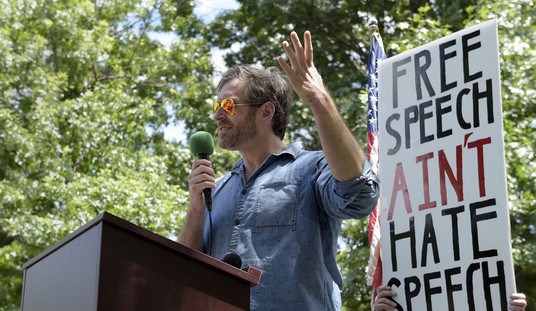THE NEW CHRYSLER, BY GOVERNMENT FIAT
By Michael S. Malone
When I read about Chrysler’s travails, I often wonder what my late father-in-law, Marvin Marschner, would think of it all.
My family was never a Chrysler fan club. My folks had one when I was a little boy – one of those wonderful late ‘50s models (not a 300, unfortunately) with the big fins, swooping roofline and that unforgettable push-button automatic transmission. But by the ‘60s we had moved on to a string of T-birds, and never went back. I own a Dodge Grand Caravan van, but that was an inheritance from Marvin, and a bittersweet violation of my life-long ‘no vans’ rule. It’s reliable and comfortable – but also the ugly duckling in a collection that includes a Jaguar, GMC Sierra pick-up, a VW bug, a ’36 Ford coupe and a Studebaker Golden Hawk.
Still, every time I drive the little van I’m reminded of Marvin’s enduring love for Chrysler. He had always been a car guy – not surprising for someone who had grown up outside Detroit the ‘20s and ‘30s. Trained as a draftsman, it was inevitable that Marvin would wind up going to work for the car industry. First it was General Motors, where he worked on dashboard design – until the war came, when he switched to cockpits on B-24s until he was drafted.
Three years later, he returned, picked up a degree in engineering at Michigan State with his GI Bill . . .and went to work for Chrysler. To hear him talk, it wasn’t just a job, but a calling. Chrysler didn’t have the history of Ford or the sheer monolithic might of General Motors, but it always had the best design, especially in the drivetrain. The Hemi – and when Marvin spoke of it, it wasn’t in the muscle-car way, but as an engineer describing a triumphant work of technology. The Bigger Two may have had the better revenues and market share, Marvin said, but Chrysler had the better cars.
In the early 1960s, at the insistence of my mother-in-law, who wanted to escape the weather and the family ties of Michigan, Marvin reluctantly packed up the family and moved to California to take a job at Lockheed. I don’t think he was ever really happy in a job again. And in the decades that followed, he always kept close watch on Chrysler’s changing fortunes. He still owned Chrysler stock, cheered the company’s turnaround under Lee Iaccoca (he even sent me a copy of the man’s book) and continued to buy one Chrysler or Dodge after another.
Marvin died almost exactly a year ago. I remember him, near the end, shaking his head in dismay at Chrysler’s growing troubles. But at least he was spared the catastrophe that has hit the company in the months since. Chrysler-Dodge-Jeep these days is a Dead Company Walking, artificially respirated by the Federal government at taxpayer expense. And its sole hope of reincarnation is to sell out to Italy’s Fiat.
Fiat! Now, I’m not going to indulge in all of the old “Fix It Again, Tony” stereotypes about Fiat cars. In fact, I’ve had friends over the years who loved their little X19s and 124 Spyders. Moreover, I’m willing to forget Fiat’s past failures in the U.S. market. Rather, I’m impressed that this historically Eurocentric builder of mostly utilitarian vehicles has shown the guts to make a run at international industry leadership – even taking on mighty Toyota. Fiat CEO Sergio Marchionne apparently believes that in the impending global automaker shake-out, the companies that will survive as winners will need to manufacture more than 5 million units per year . . .and he’s betting the store to be one of them. You’ve got to admire that.
Since Fiat’s current production stands at a little over 2 million, that means the company will have to increase production by 150 percent. It simply cannot grow that fast, especially not in this economic environment . . . so Fiat will have to expand by acquisition. That’s why it’s looking not only at Chrysler, but GM’s German operation, Opel (like Fiat, another historic failure in the U.S.).
But why Chrysler? Especially after every other major car company in the world – including Toyota – turned such a merger down over the last two years? Look at it from Marchionne’s point of view: he gains one of the Detroit Big Three – and one of the auto world’s historic marques – for next to nothing. Better yet, the President of the United States has shown that he is so beholden to the UAW and so committed to propping up dying Blue State industries, particularly automobiles, that he is not only willing to spend billions in taxpayer money to do so, violate contract law (possibly criminally) and even strip shareholders and creditors of ownership of those companies and award it to unions. In for a penny, in for a trillion dollars: the Federal government is now so deep into the problems at GM and Chrysler, it can never let those companies fail – at least as long as the current administration is in power.
Could there be a more perfect moment, given the government’s heavy-handedness, for a company called Fiat? It’s all got to be sweet, sweet music to Sergio Marchionne. Chrysler is his insurance policy: its sales volume helps push him over the magic threshold just in time for the shake-out . . .and the Obama Administration will guarantee that Fiat stays there long enough make it one of the two big Players in the new automotive marketplace that will emerge in the aftermath.
Sure, it’s not going to be easy. After all, does any reasonable person with a modicum of common, much less business, sense really believe that Fiat/Chrysler is a viable business model? First of all, the Administration has decided to violate the rights of the company’s shareholders and creditors in order to award equity control (55 percent) of the company to the United Auto Workers – utterly ignoring the fact that it was the exorbitant cost of union labor (and pliable management) that created this catastrophe by making Big Three cars – in terms of quality and engineering still as good as any competitor in the world – overpriced and unprofitable. Yet, while management and shareholders have all been heavily punished by Chrysler’s collapse, the workers have been largely spared.
So, does anyone believe that the UAW, having won the day and been handed the reins of Chrysler, is going to suddenly be filled with the spirit of compromise and concession once the deal closes? Meanwhile, the Administration is showing signs that it has no interest in selling off its minority equity position in Chrysler – no doubt in order to maintain leverage (i.e., a position of threat over the company) and enforce its calls for ‘greener’ cars. In other words, it intends to force Chrysler to sell exactly the type of cars that Americans have recently shown they either don’t want or can obtain cheaper elsewhere. Americans want Vipers, Magnums, 300s, Rams and Grand Cherokees; and Chrysler is going to sell them variants of the Toyota Priuses that, unsold, currently fill the parking lots of closed strip malls in my community. Good luck with that – unless gas prices go over $5 per gallon . . .which may be part of the plan too.
Oh, did I mention that these new Fiat/UAW Chryslers and Dodges are going to be sold into a marketplace in which nearly half of all Americans, worried by this obvious government power-grab into private industry, are likely to soft-boycott any car or truck built by General Motors or Chrysler?
And yet, all of these likely fatal obstacles are going to be overcome by the fact that, over the next couple years, Fiat will rejuvenate Chrysler with its superior small car technology and an exciting new line of green mini-cars. Seriously, does anybody believe that? I don’t think even Mr. Marchionne does. His downside is that he gets Chrysler for peanuts and with a guarantee that it won’t fail for four years. His upside is that if rainbows turn into candy canes and Chrysler actually pulls off a miracle, survives and pays off its loans, Fiat will be allowed to buy majority ownership of the company. Call it a Marchionne win-win, all paid for by American taxpayers.
Sitting out here in Silicon Valley, California (where we have our own problems, thank you very much) and watching from afar, I find myself thanking God that I’m still living in a business community where failures, no matter how big (see Sun, Netscape, Atari, Ampex, etc.), are allowed to die – to be reborn, or replaced, by more competitive versions – and where contract law is still in effect. And I’m equally happy that Marvin Marschner doesn’t have to see what’s happened to his beloved Chrysler.









Join the conversation as a VIP Member